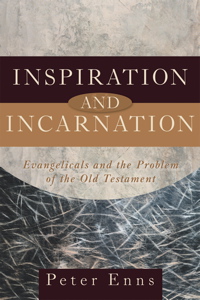
Every Friday, “Science and the Sacred” features an essay
from a guest voice in the science and religion dialogue. This week’s
guest entry was written by Peter Enns. Enns is an evangelical Christian
scholar and author of several books and commentaries, including the
popular Inspiration and Incarnation: Evangelicals and the Problem of the Old Testament
, which looks at three questions raised by biblical scholars that seem to threaten traditional
views of Scripture. This is the fourth of his multi-part series on an incarnational model of Scripture.
Much of the concern surrounding the Christian faith and the acceptance of evolution and modern cosmology and geology centers on how to read the opening chapters of Genesis. Very often, and rightly so, that discussion turns to such issues as how modern data, such as extra biblical texts and scientific developments affect how we read Genesis.
That is all fine and well, but let’s come at this from a different angle.
There is a factor that rarely enters the discussion among conservative readers of Scripture. It is only one factor, but it is very important.
If we want a clue as to how to read the opening chapters of the Christian Bible, we should go to the closing chapters.
At the end of the Bible, in the book of Revelation, in the very last chapter of the last book, we read the following:
Then the angel showed me the river of the water of life, as clear as crystal, flowing from the throne of God and of the Lamb down the middle of the great street of the city. On each side of the river stood the tree of life, bearing twelve crops of fruit, yielding its fruit every month. And the leaves of the tree are for the healing of the nations. No longer will there be any curse. The throne of God and of the Lamb will be in the city, and his servants will serve him. They will see his face, and his name will be on their foreheads. There will be no more night. They will not need the light of a lamp or the light of the sun, for the Lord God will give them light. And they will reign for ever and ever (Revelation 22:1-5, NIV).
The book of Revelation is an apocalyptic book, which means it is a figurative, symbolic description of what the “end” will look like. Much of Revelation is concerned with showing God’s ultimate rule over history, and how he is bringing that history to its consummation in Christ.
And note how history will end: in a garden, with a river, a tree of life, and the removal of the curse. I hope bells are going off right about now.
In a manner of speaking, the point of the entire story of redemption laid out in the Christian Bible is to get us “back into the garden,” to regain what was lost, for the obedient Second Adam to undo the disobedience of the first Adam.
The book of Revelation, however, is not a literal description of events in time and space. To be sure, God will bring history to its consummation, but the description of that consummation in Revelation is figurative or symbolic. That is the nature of apocalyptic literature in the ancient world, and Revelation participates in that literary convention.
Although it has occasionally been tried, a “literal” (meaning time-space, historical) reading of Revelation does not work at all. The message behind Revelation is something God will do in history, but the description of those events are figurative. This is especially clear beginning in Chapter 21, where we read of a “New Jerusalem” descending from the sky. Its description is a symbolic amalgamation of Jerusalem, temple, and Garden of Eden imagery. It is not a literal city crashing down on the Earth, but a theologically potent, concrete, ancient description of what God will eventually do in time and space.
The use of such imagery was a powerful communicator of theological truth to ancient peoples–and it should be to us, as well. And here is my point to ponder: the symbolic, non-literal nature of the renewed Garden in Revelation 22 should suggest to us, quite strongly in fact, that the Garden of Genesis 2-4 likewise, although communicating theological truth, is also symbolic and non-literal. Both are “true,” deeply so, but neither are literal, historical, or physical.
Discuss amongst yourselves, but try to keep it nice.

